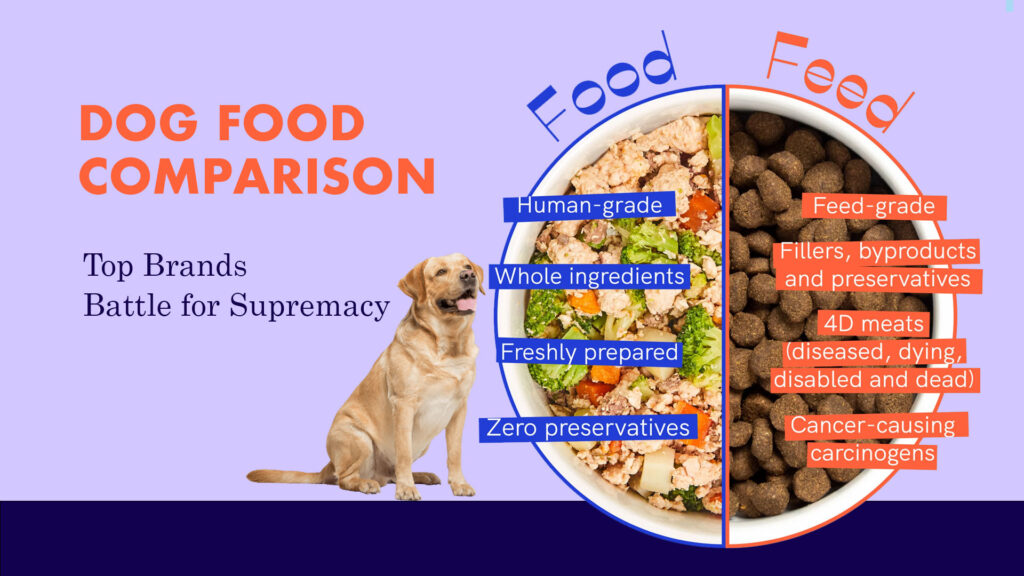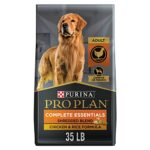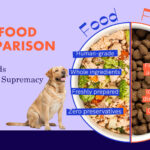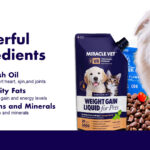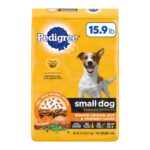Comparing dog food brands can ensure optimal nutrition for your pet. Key factors include ingredient quality, price, and specific dietary needs.
Choosing the right dog food is crucial for the health and well-being of your pet. Owners often struggle to sift through the multitude of options available, each promising the best for their four-legged friends. It’s important to evaluate the nutritional value, ingredients, and cost-effectiveness of different dog food brands to make an informed decision.
Understanding your dog’s individual requirements, such as age, breed, and any special health conditions, is essential when comparing products. A well-rounded comparison looks at customer reviews, expert recommendations, and the company’s reputation for quality and safety standards. By doing thorough research, pet owners can select a dog food that not only satisfies their pet’s palate but also supports their overall health and vitality.
The Canine Cuisine Contest
Welcome to the ultimate showdown in dog dining: The Canine Cuisine Contest. Here, we put leading dog food brands head-to-head. Pet parents deserve to know which grub reigns supreme for their furry friends. Stick with us as we dive into the delicious details.
Selecting Contenders
We begin by choosing top dog food brands. Our experts look at popularity, quality, and vet recommendations. We aim for a mix that includes both well-known and rising stars. This ensures a fair and informative comparison for every dog owner.
Criteria For Comparison
- Ingredient Quality: We examine the source and type of each ingredient.
- Nutritional Value: Balanced meals for dogs are crucial. Foods must meet dietary needs.
- Price Point: Cost plays a big role. We compare the value for money.
- Flavor Diversity: Taste matters. We consider the range of flavors offered.
- Brand Reputation: A brand’s history and recalls can affect trust. We don’t overlook it.
Each contender faces rigorous testing. Our canine judges are ready. They will put their taste buds to the test. Stay tuned as we dish out the results of this scrumptious skirmish!
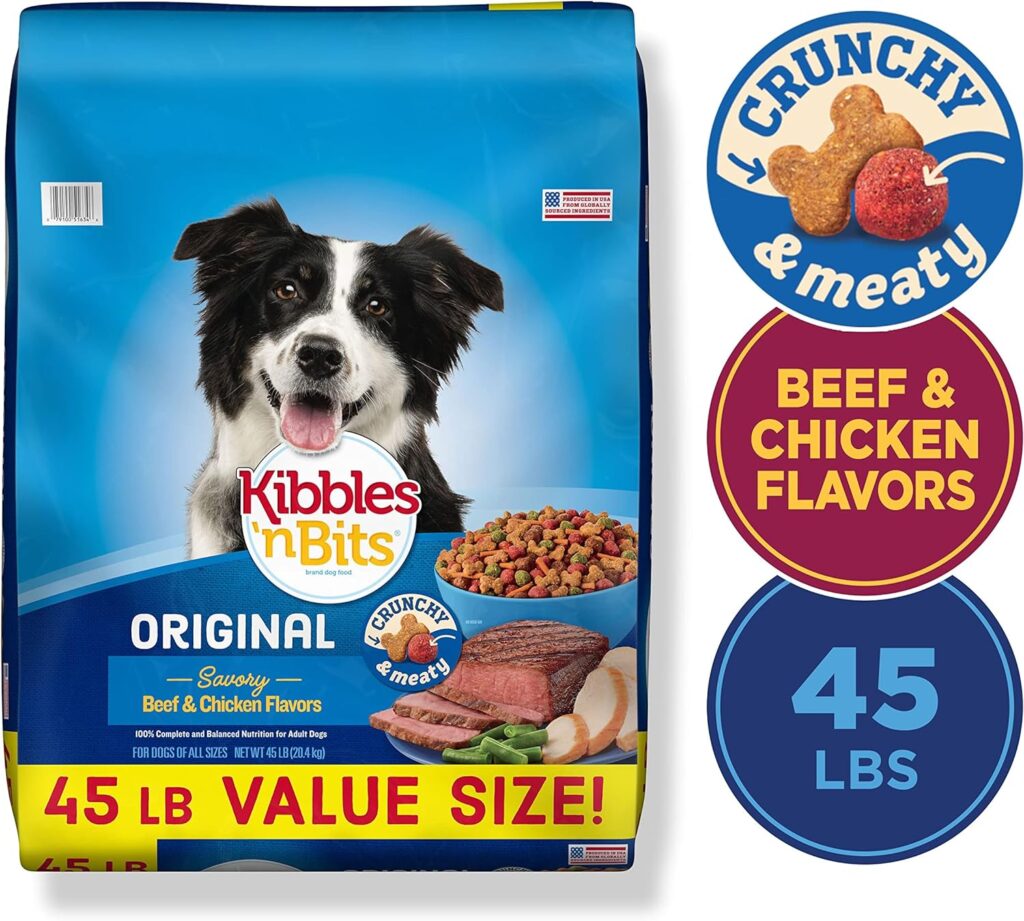
Nutritional Face-off
Welcome to our ‘Nutritional Face-Off’ where we dive into the world of dog food comparisons. Pets are family members, and just like any loved one, providing them with the best nutrition is a priority. Today, we’re going to break down the key components that transform an ordinary meal into a powerhouse of nutrients for your furry friends.
Key Ingredients
Let’s start by looking at what goes into your dog’s food.
- Meat: The primary source of protein; it helps with muscle development.
- Vegetables: Loaded with vitamins and minerals, they support overall health.
- Whole Grains: These provide fiber, aiding in healthy digestion.
- Fats: Essential for energy and maintaining healthy skin and coat.
- Vitamins & Minerals Supplements: Ensure balanced nutrition.
Protein Content Analysis
Protein is crucial for your dog’s health. We’re pitting top brands against each other to see who packs the most punch.
| Brand | Protein Source | Protein % |
|---|---|---|
| Brand A | Chicken | 25% |
| Brand B | Beef | 22% |
| Brand C | Lamb | 24% |
| Brand D | Fish | 23% |
In this table, Brand A leads with a high protein percentage from chicken, ideal for muscle maintenance. Selecting the right brand depends on your dog’s specific needs and preferences. Always check the label for a complete breakdown.
Start of the Safety Standards Showdown section
When it comes to our furry friends, nothing is more crucial than their health. Choosing the right dog food means looking beyond colorful packaging and catchy slogans. In the world of dog food, safety is the top priority. Pet owners need to navigate the maze of product recalls, understand compliance with industry standards, and pick the brands that put their dog’s well-being first. Let’s dive into the nitty-gritty of safety and discover which dog food brands ace the test!
Recall Histories
Recalls can tell a lot about a brand’s commitment to safety.
- Check recall frequency: Brands with fewer recalls are often more reliable.
- Study the reasons for recalls: Understanding why products were recalled helps identify safety concerns.
- Monitor current news: Stay updated on the latest recall information.
Regulatory Compliance
| Organization | Function | Brands in Compliance |
|---|---|---|
| American Feed Control Officials (AAFCO) | Sets nutritional standards for pet foods | Brand A, Brand B, etc. |
| The United States Food and Drug Administration (FDA) | Monitors ingredient safety and proper labeling | Brand C, Brand D, etc. |
Quality dog foods meet or exceed the requirements set by these bodies.
Price Point Playoff
Welcome to the Price Point Playoff, where your budget meets your buddy’s nutrition. This section is about getting the most bark for your buck without compromising on the quality of your dog’s diet. Let’s dive into the dog food aisle and compare what’s on the shelf, focusing on how much you’ll pay and what you’ll get.
Affordability Vs. Value
Dog food prices can range from budget-friendly to premium spends. But price doesn’t always reflect quality. A bag of dog food with a lower price might seem like a great deal, but it’s essential to assess its nutritional value. Conversely, a higher-priced product could mean top-notch ingredients that better cater to your dog’s health. Is it worth the extra pennies? Let’s find out.
Cost Per Serving Breakdown
Understanding the cost per serving will make your comparison easier. Here’s a breakdown to help you:
| Brand | Bag Size (lbs) | Cost ($) | Servings per Bag | Cost per Serving ($) |
|---|---|---|---|---|
| Econo-Dog | 20 | 25.00 | 40 | 0.625 |
| Premium Paws | 15 | 40.00 | 30 | 1.33 |
- Look beyond the sticker price. Check servings per bag.
- Calculate the cost per meal to truly measure the deal you’re getting.
Remember, the cheapest option isn’t always the least expensive in the long run. Consider your dog’s health and happiness with every purchase. Choose wisely and both your wallet and your pup will thank you.
Flavor Frenzy
Is your furry friend a picky eater, or does he gobble down whatever you put in his bowl? Dog food comes in various flavors, and owners often wonder which tastes reign supreme in the canine world. This section dishes out everything you need to know about dog food flavors. We will take a peek at what flavors get tails wagging and those that make dogs turn up their noses.
Popular Flavors Ranked
Beyond the classic chicken and beef, dog food brands have become quite creative. Let’s explore the top dog food flavors that have dogs drooling:
- Chicken: Often the go-to flavor for many pups.
- Beef: A close second, with a rich taste dogs love.
- Peanut Butter: A surprising hit for its creamy texture.
- Pumpkin: Growing in popularity, especially for sensitive stomachs.
- Fish Flavors: Known for Omega-3 benefits and savory taste.
Dogs also enjoy flavors like lamb, turkey, and even exotic game meats. Each flavor has its unique appeal to our four-legged connoisseurs.
Palatability Tests
So how do we determine which dog food flavors make the grade? Through palatability tests. These are like taste trials for dogs:
- Several dogs sample different food flavors.
- Experts notice which bowls empty fastest.
- They record the dogs’ reactions to each flavor.
Palatability tests help manufacturers design foods that meet dogs’ taste preferences. This ensures that your furry companion doesn’t just eat to live, but lives to eat with gusto!
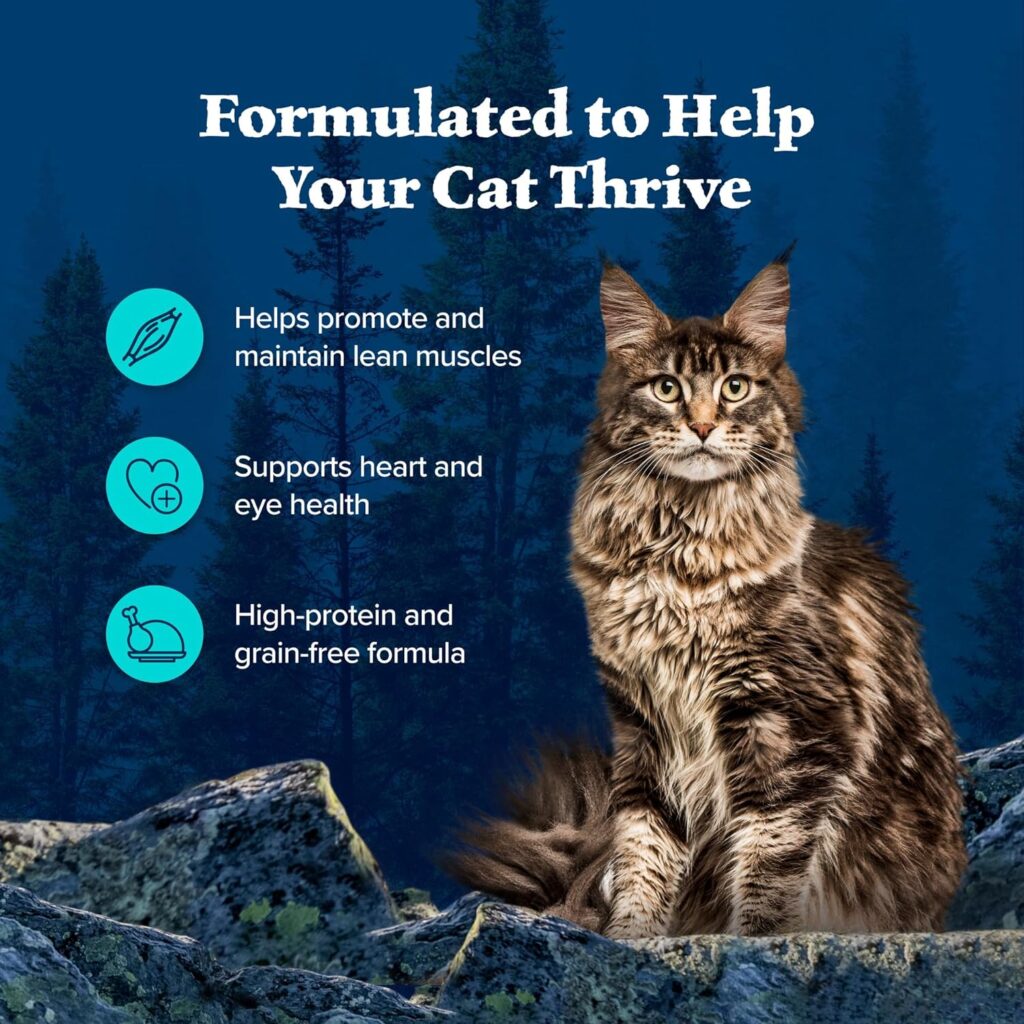
Allergen Alert
Dogs, like people, can face food allergies that cause discomfort and health issues. Careful selection of their diet is essential. The right food can ensure a happy, healthy pup free of allergic reactions. Let’s compare dog foods with a focus on those that cater to our sensitive furry friends.
Sensitive Dog Solutions
Finding the right food for a dog with a sensitive stomach or allergies can be a game-changer. Look for these characteristics:
- Limited ingredients to reduce potential allergens
- Single protein sources such as duck or lamb
- Grain-free options to eliminate common triggers like corn or wheat
- Prebiotic fibers and probiotics to support digestive health
Hypoallergenic Formulations
Hypoallergenic dog foods are crafted to minimize the risk of allergic reactions. These foods often contain novel proteins and carbohydrates, which are new to a dog’s diet and less likely to cause an immune response.
| Brand | Protein Source | Grain-Free |
|---|---|---|
| A+ Nutrition | Venison | Yes |
| Canine Care | Kangaroo | No |
| PetHealth Balance | Duck | Yes |
Selecting a hypoallergenic brand requires assessing your dog’s specific needs and potential allergies. Regular monitoring and veterinary advice is vital to manage any dietary changes.
Lifecycle Battles
Dog owners often face the challenge of choosing the right food at different stages of their pet’s life. Different life stages require different nutrition. This section dives deep into the Lifecycle Battles of dog food, comparing what puppies and senior dogs need for optimal health.
Puppy Formulations
Puppies grow fast and need special nutrients to help their development. High-quality puppy food formulas often contain more calories, protein, and fats. These are essential for their energy and growth.
Key components of puppy formulations include:
- DHA for brain development
- Calcium for strong bones and teeth
- Probiotics for healthy digestion
Senior Specialties
As dogs age, their dietary needs change. Senior dogs require fewer calories but still need nutrient-rich food. These needs help maintain a healthy weight and support joint health.
Essential nutrients in senior dog food include:
- Glucosamine and chondroitin for joints
- Adjusted omega fatty acids for skin and coat health
- High-fiber ingredients for consistent digestion
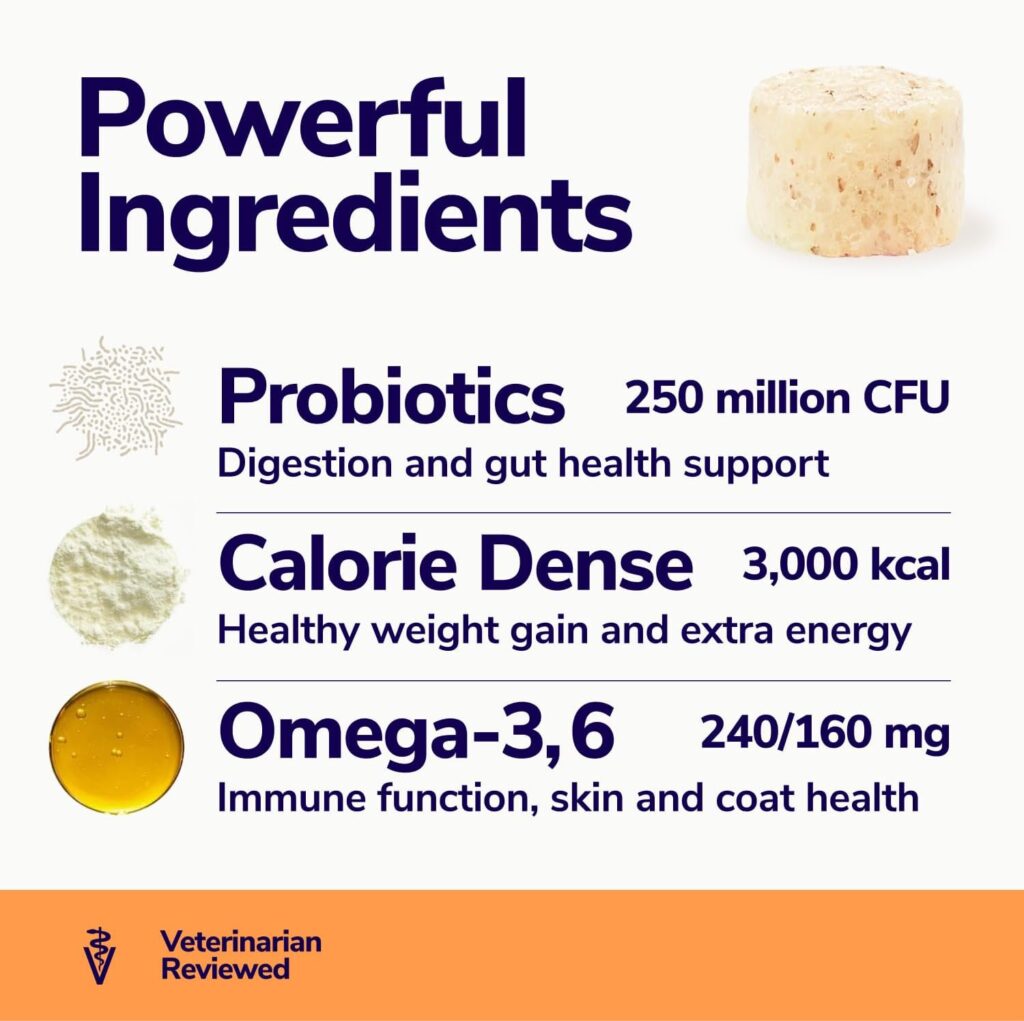
Ingredient Source Scrutiny
Choosing the right dog food can be a puzzle, especially when it comes to understanding where ingredients come from. Pet owners deserve to know the origin of their furry friend’s meals. This section dives into local versus global ingredient sources and the organic versus non-GMO discussion.
Local Vs. Global Supplies
Many pet parents now favor foods with locally sourced ingredients. This choice often supports regional businesses and may offer fresher options for your pet.
- Locally-sourced ingredients may travel faster from farm to bowl.
- Shorter shipping distances can reduce the food’s carbon footprint.
Global supplies, however, have their advantages. They can offer a wider variety of ingredients. This can lead to more balanced and diverse diets for pets.
| Source | Pros | Cons |
|---|---|---|
| Local | Freshness, supports local economy | Limited ingredients |
| Global | Ingredient diversity | Longer transportation, potential for reduced freshness |
Organic And Non-gmo Debates
The buzz around organic and non-GMO dog foods continues to spark discussions among pet owners.
Organic foods promise the omission of synthetic pesticides and fertilizers in their ingredients—a cleaner meal for dogs.
Non-GMO products shun genetically modified ingredients. This choice reflects a desire for a dog’s diet to remain as natural as possible.
- Organic ingredients ensure chemical-free sourcing.
- Non-GMO certified labels suggest no genetic alterations.
- Both choices aim for quality but may increase cost.
Consumer Loyalty & Brand Trust
When you think about dog food, trust is key. Trust makes you come back. It’s about quality, health, and happiness for your dog. Big names in dog food know this. They work hard to keep you and your dog happy. But how do these brands really stack up? Let’s dive into the world of dog food and see who truly leads the pack in consumer trust and loyalty.
Customer Satisfaction Surveys
Dog owners talk to us through surveys. They tell us what foods make their dogs wag their tails. Quality, taste, and health benefits stand out. They even mention how easy it is to buy their favorite brand.
- Taste: Which brand do dogs love?
- Health: Who provides the right vitamins?
- Accessibility: Can you find it at your local store?
Brand Loyalty Analysis
Some dog food buyers only fill their carts with one brand. They trust it. Their dogs thrive on it. Why change? A deep look into loyalty shows us why.
| Brand | Loyalty Score | Why Owners Stay |
|---|---|---|
| Barky Bites | 9/10 | Consistent Quality |
| Tailwag Treats | 8/10 | Natural Ingredients |
| Pooch’s Choice | 7/10 | Price for Value |
Prescription Diets Duel
Welcome to the Prescription Diets Duel, where we put premium dog food formulas to the test. Owners often face a difficult choice when veterinarians recommend prescription diets for their furry friends. Understanding the therapeutic effectiveness and garnering insights into veterinary recommendations can help make the decision clearer. Let’s dive into this duel and discover which diet reigns supreme for our canine companions.
Therapeutic Effectiveness
Dog foods tailored for medical conditions aim to improve health. Companies develop them with specific goals in mind. Some may target kidney health, while others focus on improving digestion or supporting joint health. But how effective are these diets?
- Kidney Care: Reduced protein and phosphorus to lessen kidney strain.
- Digestive Support: High in fiber and easily digestible proteins to aid gut health.
- Weight Management: Calorie-controlled for a healthy weight.
The right prescription diet can make a significant difference in a dog’s wellbeing. Results vary, and owners should monitor their pets closely for signs of improvement.
Veterinary Recommendations
Veterinarians often advise specific diets after a thorough diagnosis. They consider factors such as age, breed, and pre-existing conditions. Balancing nutritional needs with medical requirements is complex.
| Condition | Recommended Diet Feature |
|---|---|
| Heart Disease | Low sodium for less stress on the heart |
| Obesity | Fewer calories, higher in fiber |
| Allergies | Limited ingredients, novel proteins |
Prescription diets are often part of a larger treatment plan. They work best with regular check-ups. Always seek a vet’s guidance before changing your dog’s diet to a prescription formula.
Wet Vs. Dry Dog Food Dynamics
Choosing the best food for your furry friend is key to their health. Dog owners often ask which is better: wet or dry dog food. Each type offers different benefits for your dog’s health and taste buds.
Moisture Content And Shelf Life
Understanding the differences between wet and dry dog food is crucial. Wet dog food contains more moisture, which is good for hydration. Dry dog food has less moisture and a longer shelf life, making it convenient for storage.
| Type | Moisture | Shelf Life |
|---|---|---|
| Wet Dog Food | Approx. 75% | Fewer days once open |
| Dry Dog Food | Approx. 10% | Up to a year unopened |
Pros And Cons
Each food type offers different pros and cons.
- Wet Dog Food Pros:
- Higher moisture
- Richer in flavor
- Easier to chew
- Wet Dog Food Cons:
- Expensive
- Shorter shelf life after opening
- Can contribute to dental issues
- Dry Dog Food Pros:
- Convenient storage
- Cost-effective
- Can help clean teeth
- Dry Dog Food Cons:
- Less hydrating
- Some dogs may find it less palatable
- Potentially contains more preservatives
The Organic Option
When it comes to feeding your furry friends, choosing the right diet is crucial for their health and happiness. One option that’s gaining popularity is organic dog food, known for its quality ingredients and natural farming practices. This trend towards organic food aims to offer pets a diet free from artificial additives, pesticides, and genetically modified organisms (GMOs).
Certifications And Standards
Before labeling any dog food as ‘organic,’ it must meet strict guidelines. Let’s dive into what makes organic dog food stand out:
- USDA Organic certification ensures that at least 95% of the ingredients are organic.
- Foods with a “made with organic” label contain a minimum of 70% organic ingredients.
- All organic ingredients must be grown without synthetic fertilizers or pesticides.
- Organic meats come from animals raised in humane conditions without antibiotics or hormones.
The Verdict On Organic Brands
What do pet experts and dog parents say about organic brands?
| Pros | Cons |
|---|---|
| Potential for improved health and vitality | Usually more expensive than conventional foods |
| Reduced likelihood of allergies caused by additives | Limited flavor and formula variety compared to non-organic brands |
| Eco-friendly due to sustainable farming practices | Availability may be an issue in some markets |
Picking an organic food brand can be beneficial, but always consider your dog’s specific health needs and your budget before making a switch.
Kibble Confrontation: Grain-free Vs. Whole Grain
When choosing food for our furry pals, the kibble aisle can be baffling.
Grain-free and whole grain dog foods stand out as popular options.
Each offers unique benefits, sparking a lively debate. This post delves into the core differences, helping you make the best choice for your pet.
Digestive Health Debate
Digestive health is crucial for a happy dog. Grain-free kibbles often contain ingredients like sweet potato, which some vets say is easier on the stomach. However, whole grains like brown rice are packed with fiber which is good for digestion. The choice depends on your dog’s specific needs.
- Grain-Free Benefits:
- Easier to digest for some dogs
- Often higher in protein
- Can be helpful for dogs with grain allergies
- Whole Grain Benefits:
- High in natural fiber
- Contains essential nutrients
- Supports energy levels
Consumer Preferences
Dog owners choose based on their pet’s health and their own research. Some believe grain-free helps with allergies. Others pick whole grain for its nutrient profile and affordability.
| Preference Factor | Grain-Free | Whole Grain |
|---|---|---|
| Allergy Concerns | Often Preferred | Less Common Choice |
| Nutrient Profile | Varies | Typically Well-Balanced |
| Price Point | Often Higher | Generally More Affordable |
| Dog’s Preference | Flavor Diversity | Traditional Taste |
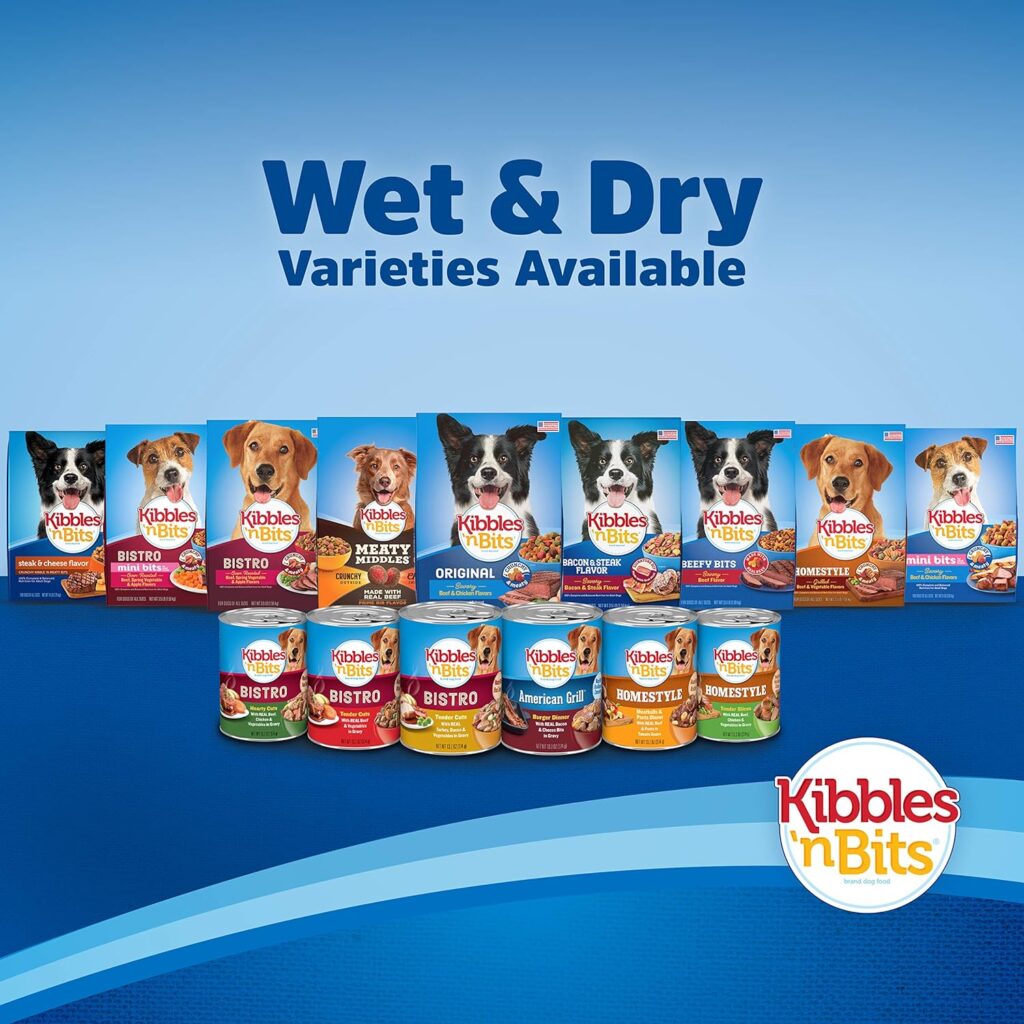
Brand Biographies
Dog owners cherish their furry friends and want the best for them, starting with what they eat. Choosing the right dog food brand can be overwhelming. Nevertheless, understanding each brand’s story and their market position makes the decision easier. Dive into the histories and offerings of well-known dog food manufacturers.
Founding And Evolution
Every brand has a beginning. Some start in home kitchens, while others evolve from large companies aiming to fill a gap in pet nutrition. These pioneers in dog food often sprout from a deep passion for pets and a desire to provide them with quality food. Over time, these brands expand their reach, sometimes even changing hands or reinventing their recipes to keep up with modern nutritional research.
| Brand | Founded In | Origin Story |
|---|---|---|
| Brand A | 1930 | Started by a vet wanting better pet health |
| Brand B | 1965 | Born from a pet owner’s kitchen experiments |
Market Positioning
Knowing where these brands stand in the competitive market is crucial. Some champion natural and organic ingredients while others focus on budget-friendly options. There are brands that specialize in life-stage specific formulas and those that cover a broad range of dietary needs. Each brand wants to connect with dog owners in a unique way.
- Brand A – Known for scientific approach to dog nutrition
- Brand B – Prides itself on wholesome, natural ingredients
The Final Bark: Choosing What’s Best For Your Dog
Finding the right dog food is like picking the perfect meal for a family dinner. It should be nutritious, tasty, and fit well with dietary needs. Every dog is unique. Their food should be too. From puppies to seniors, the journey to the perfect meal is key to a happy, healthier life.
Tailored Nutrition Plans
Dog food isn’t one-size-fits-all. Each pup requires different nutrients based on their age, size, and activity levels. A Chihuahua’s diet will vary vastly from a Siberian Husky’s. Personalized meal plans guarantee your furry friend gets exactly what they need.
- Lifecycle nutrition caters to every life stage
- Activity-based meals fuel dogs based on their energy expenditure
- Specialized formulas address health conditions and allergies
Consult your vet to create a diet tailored to your dog’s unique needs.
Owner Takeaways
When it comes to feeding your dog, remember:
| Keep in Mind | Actions to Take |
|---|---|
| Understanding Ingredients | Read labels, look for whole food ingredients and avoid fillers. |
| Nutritional Adequacy | Ensure the food meets AAFCO nutritional profiles. |
| Feeding Practices | Maintain regular feeding times and portion control. |
Always be prepared to adjust your best friend’s diet with their changing needs. Listen to your dog’s feedback, assess their health, and stay informed about the latest in canine nutrition. Your efforts will ensure a joyful and healthy life together!
Frequently Asked Questions On Dog Food Comparison
What Is The Number 1 Healthiest Dog Food?
Determining the number one healthiest dog food varies by individual dog needs. Choose products with high-quality proteins, whole foods, healthy fats, and minimal fillers. Consult a veterinarian for tailored recommendations. Always check for AAFCO compliance on labels for balanced nutrition.
How Do I Compare Dog Foods?
To compare dog foods, review ingredients for quality and nutritional value. Check protein sources, avoid fillers and artificial additives. Assess the food’s AAFCO profile for balanced nutrition. Consider your dog’s breed, age, and health needs. Evaluate customer reviews for satisfaction and results.
What Is The Healthiest Food To Feed Your Dog?
The healthiest dog food is balanced, veterinarian-recommended, and matches your dog’s specific dietary needs. Opt for high-quality, whole-food-based diets with appropriate proteins, carbs, fats, and nutrients. Always prioritize personalized nutrition over generic options.
What Is Kirkland Brand Dog Food Comparable To?
Kirkland brand dog food is often compared to premium brands like Blue Buffalo and Taste of the Wild due to its quality and ingredient lists.
Conclusion
Choosing the right dog food doesn’t have to be a puzzle. With the insights from our comprehensive comparisons, you’re well-equipped to make an informed decision that suits your furry friend’s needs. Embrace the journey of nourishment with confidence, knowing that each meal will support their health and happiness.

